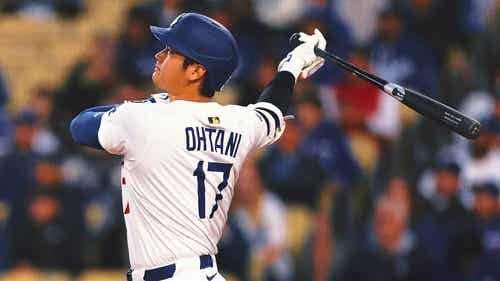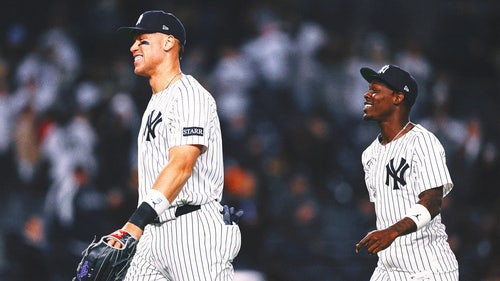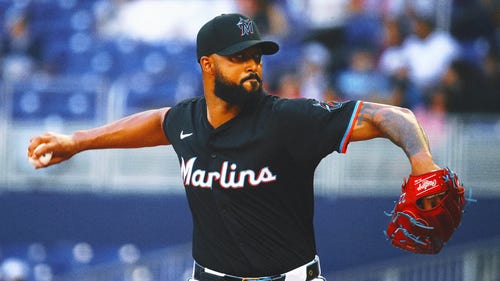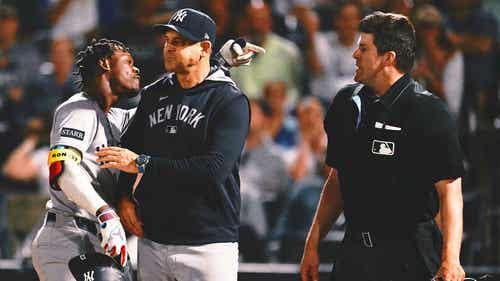
MLB attempts to speed up game with pace-of-play rules
Baseball has long been called "America's Pastime," and as time itself passes, the game has grown to encompass that definition -- in a negative way.
But will speeding up the game's pace of play with new rules that include a running clock recapture a 21st century audience addicted to the faster pace of football?
"The games are getting a little too long,'' said Steve Berthiaume, television voice of the Arizona Diamondbacks on FOX Sports Arizona. "I hate the idea of a clock on a baseball field. It's not a pleasant sight to me. I tend to want to say leave baseball alone now, but I do think you need to tighten up the breaks.''
In the past 30 years, football has replaced baseball as the most popular sport in the country. The gap -- 1 percent in 1985 -- has bloated to 21 percent in the latest Harris Poll in 2014.
The first game of the 2014 World Series drew 12.2 million viewers, the fewest ever. Nielsen ratings show 50 percent of baseball viewers are 55 or older, up 41 percent over the past 10 years. Little League participation has dropped from almost 3 million in the past 20 years to 2.4 million in 2013.
So how does baseball regain its popularity and bring youth back to what was once America's most revered game?
Speed it up, says new commissioner Rob Manfred, who has made it his major priority.
In 1972, games averaged less than 2 1/2 hours. Last season games averaged 3 hours, 8 minutes. This, coupled with shorter attention spans, translates into a major problem for the game of baseball, especially among youth.
That's the demographic Diamondbacks President and CEO Derrick Hall wants to target.
"You really want them to participate in the sport, continue to participate, be fans of the sport for life, but it's not so much whether the game is three hours and 10 minutes or three hours and 30 minutes," he said. "It's more so pace of game in the down times. Should we be taking as much time in between innings? Should we be taking as much time between pitches or in inning changes? That's what we're focused on, and I like it. I'm thrilled."
So is baseball with its early results. Average times for games in the first week of the new season dropped nine minutes to 2:59, the result of tinkering with pace of play rules in the Arizona Fall League in 2014 and spring training this year.
"We won't wait till the season is over, we'll be assessing this as we go along and see where we are," said Joe Garagiola Jr., MLB senior vice president of on-field operations. "I suspect it's a conversation that we'll see continue."
MLB took its first step toward changing the rules last fall in the Arizona Fall League. Batters had to keep one foot in the batter's box, and pitchers were given 20 seconds to throw a pitch. A maximum of three mound visits per game was implemented along with a maximum 2 minute, 5 second break between innings with the hitter required to be in the batter's box by the 1:45 mark.
"We wanted to make changes," Manfred said. "We wanted to be responsive, but we never wanted to do anything with the play of game on the field that's going to change the way the game is played. I think the players are supportive of what we're trying to do with pace of game, and they understand the significance of the undertaking."
Diamondbacks pitcher Archie Bradley played in the Arizona Fall League last season.
"At first guys were pretty conservative with it, making the pitch on time and making the right pitch, but once we got used to it, it really wasn't an issue," he said. "The integrity or fundamentals of the game we don't want to see that messed with or altered. I understand wanting to speed up the game, but there are right ways to do it and other ways I'm not a big fan of."
MLB didn't implement the 20-second pitch clock in spring training or the regular season, and Oakland A's pitcher Tyler Clippard hopes they never do.
"That's not necessary," he said. "The idea doesn't really make sense to me. If you're a pitcher and you work fast, it's better for your team, it's better for your defense, it's better for you. So, for baseball to say it's not good enough and implement a rule that organizations as a whole have been preaching for decades, it doesn't make any sense to me."
The league was comfortable enough with the changes to alter them slightly for spring training and then use them into the regular season. Players must continue to keep one foot in the box and will have 2:25 between innings -- 2:45 if the game is nationally televised. Managers can now also signal instant replay challenges from the dugout.
Reaction around the league has been mixed, with some who don't see a reason to alter a clock-less game and some who welcome a change.
"I like the fact we're trying to pick up the pace," Los Angeles Dodgers Manager Don Mattingly said. "We don't need to walk around on the mound or the batter's box and do all the other stuff. Honestly, even as a person on the field, when the game is moving slow, it's really frustrating. It's like, 'C'mon man, let's go. Get in the box, throw the ball. Let's play.'"
Starting May 1, a $500 fine will be assessed to batters who step out of the box and pitchers who run out of time on the inning-break clock. MLB has already sent out 10 letters to players who violated the pace of play rules within the first five days of the 2015 season.
Boston Red Sox designated hitter David Ortiz is a vocal opponent of the fining system.
"Well, I might run out of money," Ortiz said earlier this spring. "I'm serious. I'm not going to change my game. I don't care what they say. My game, it's not like I go around and do all kinds of stupid [expletive]. But I have to take my time and think about what that [pitcher] is going to do next. I'm pretty sure every single hitter at this level is on the same page."
While players may be split, their opinions ultimately don't matter. These changes are about drawing more fans back to the game and making new fans along the way. A quicker pace means more money if seats are full.
"If you want speed, then you can go to a hockey or basketball game," said David Smith of Phoenix, a fan watching the Padres take on the Mariners this spring at the Peoria Sports Complex. "But if you're old-school, and I think if you ask anybody over 30 or 40, you'll probably get the same reaction, but it's fine. There's plenty of time to get up and use the bathroom between innings."
The balance between keeping tradition alive and continuous adaptation is delicate. In the first months of Manfred's tenure, he has shown he's determined to move America's Pastime into the 21st century. Whether or not the changes will pay off in the long run remains to be seen.
"It is crucial at this point in the game's history that we hear what the fans have to say and take measured changes to be responsive to what we're hearing," Manfred said. "In terms of quantitative, I certainly want to reverse the trend of increasing the length of the game. I'm really intent on the idea that we're going to have an average game time that's going to start with a two next year."





